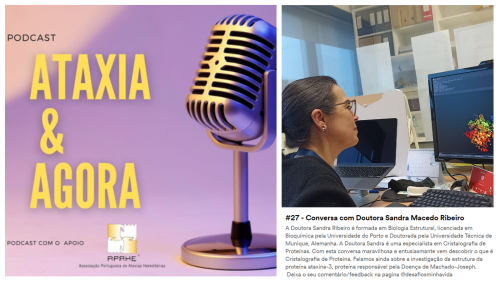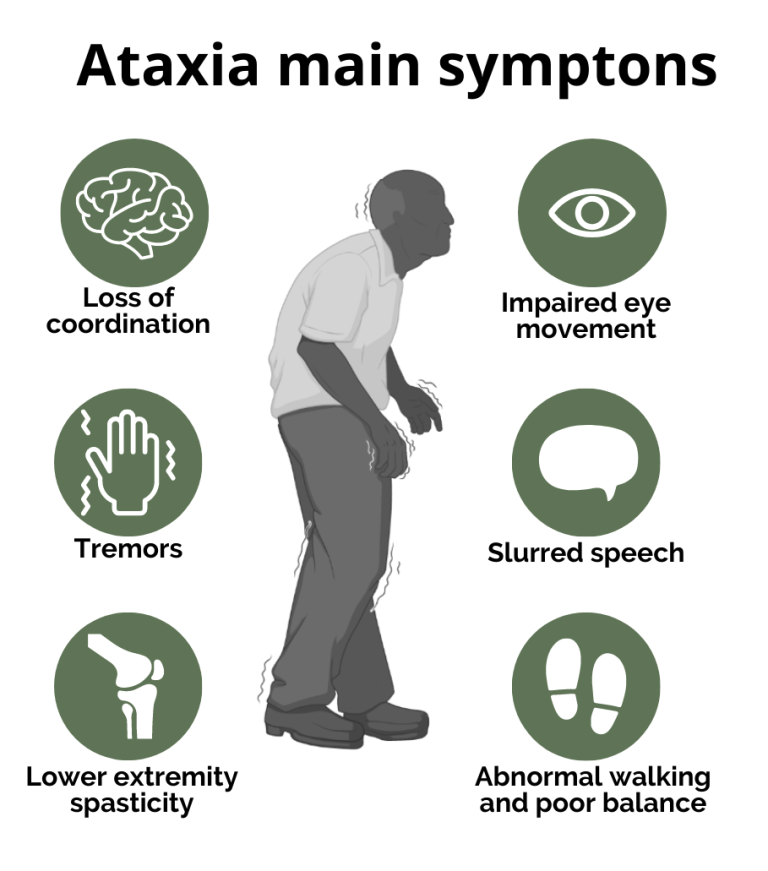Sandra Ribeiro Explores the Role of Protein Crystallography in Ataxia Research on "Ataxia&Agora" Podcast

Sandra Ribeiro, the PhasAGE coordinator and the group leader of Biomolecular Structure & Function at i3S, recently made a guest appearance on the portuguese podcast “Ataxia&Agora,” hosted by Susana Reis.
This podcast series, done in collaboration with the Portuguese Association of Hereditary Ataxias (APAHE), offers listeners valuable insights into the challenges faced by individuals living with ataxia and the research being conducted to combat these neurodegenerative conditions. In this episode with Sandra Ribeiro, the enlightening conversation shed light on the fascinating field of protein crystallography. Sandra explored the pivotal role of this structural biology technique to solve the mystery of protein structure aiming to unravel the molecular causes of human diseases.
Ataxia is a debilitating neurological disorder characterized by a lack of voluntary muscle coordination, leading to difficulties with movement, balance, and speech. This condition poses both pathological and psycho-emotional challenges for those affected. Pathologically, ataxia stems from the progressive degeneration of nerve cells, primarily in the cerebellum, the region responsible for coordinating movement. Psychologically, the impact of ataxia can lead to frustration, anxiety, and a loss of independence, affecting the quality of life for individuals and their families.
During the podcast, Sandra Ribeiro described some steps of protein crystallography technique and highlighted how it can be used to better understand the molecular features of ataxias, with a particular focus on Machado-Joseph Disease (MJD). MJD, also known as Spinocerebellar Ataxia type 3 (SCA3), is a rare hereditary neurodegenerative disorder. It is caused by an abnormal expansion of the CAG trinucleotide repeat in the ATXN3 gene, resulting in the production of a pathogenic version of the protein Ataxin-3 with an expanded polyglutamine tail. This protein accumulates in clumps in nerve cells, leading to their dysfunction and eventual degeneration, which underlies the pathological symptoms.
By employing protein crystallography technique and structural biology concepts, researchers like Sandra Ribeiro can explore in more detail the three-dimensional structure of disease-related proteins and gain crucial insights into its role in the pathophysiology of human diseases, particularly proteinopathies.

You can listen the full podcast here: https://podcasters.spotify.com/pod/show/susana-reis/episodes/27—Conversa-com-Doutora-Sandra-Macedo-Ribeiro-e243o3c/a-a9rp00p (Portuguese version only).
We want to acknowledge Susana Reis for the kind invitation to participate in this initiative and Milena Paneque from CGPP at i3S for assisting throughout this process. This was a very special and dear moment to the PhasAGE coordinator.
